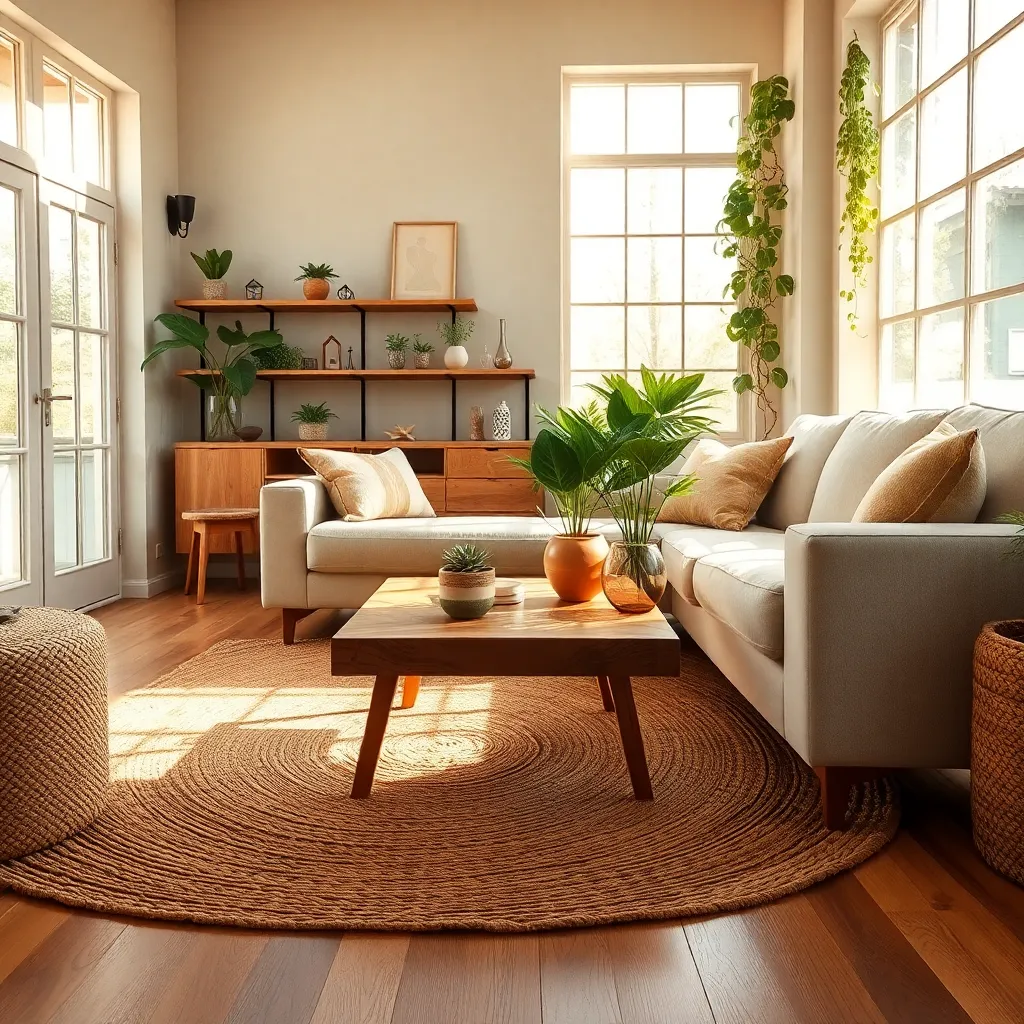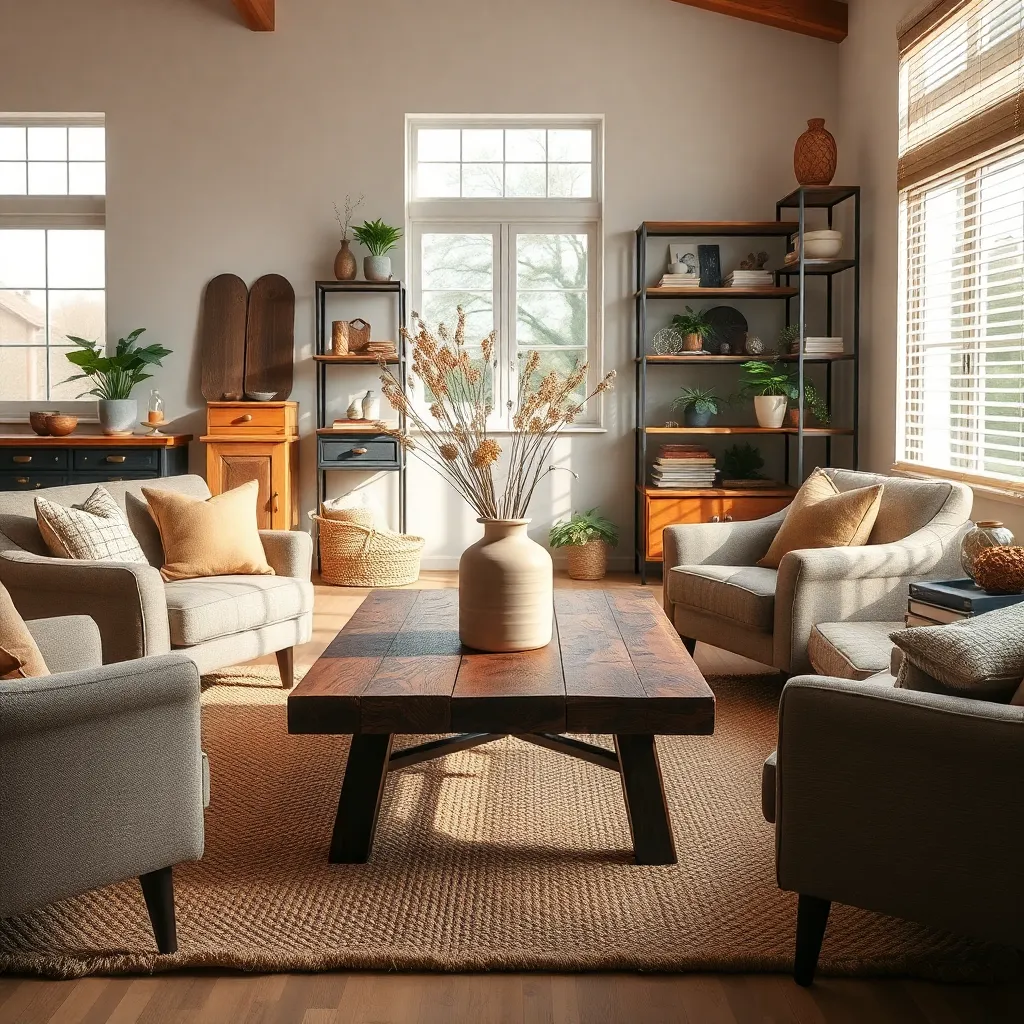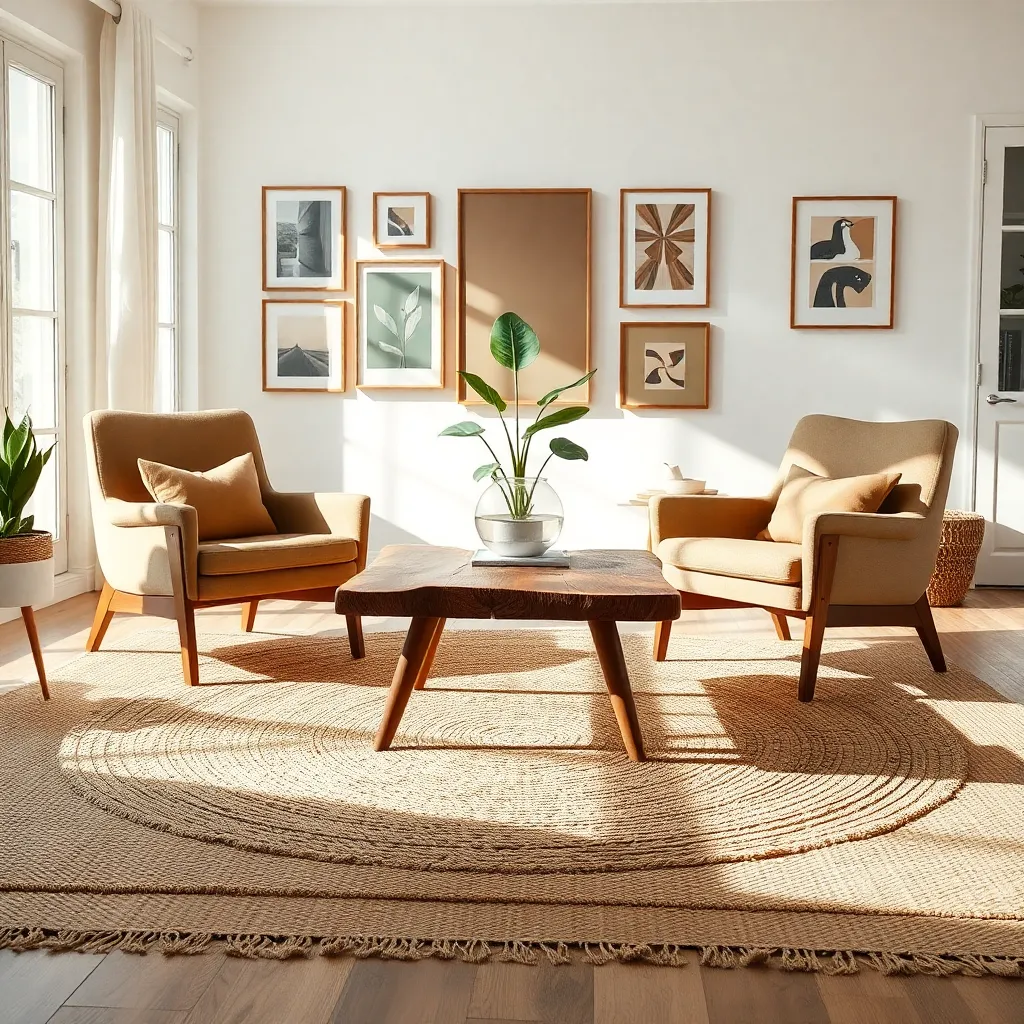In a world where sustainability has become more than just a buzzword, embracing eco-friendly practices in our homes is a delightful journey rather than a daunting task. Sustainable interior design is not only about making environmentally conscious choices but also about crafting spaces that resonate with harmony and creativity. Whether you’re rearranging your living room for the first time or you’re a seasoned decorator with a keen eye for detail, adopting sustainable practices can transform your home into a haven of style and substance.
Imagine a home where every piece of furniture tells a story of mindful curation and every material choice reflects a commitment to the planet. This article will guide you through the essentials of sustainable interior design, offering insights into materials, techniques, and styles that are kind to the environment without compromising on elegance. From selecting reclaimed wood to choosing energy-efficient lighting, you’ll discover how sustainability can seamlessly blend with your unique aesthetic, all while fostering a sense of well-being.
Exploring the world of sustainable design opens up a realm of creative possibilities for both beginners and seasoned decorators. You’ll learn how to integrate sustainable elements into any design style, ensuring that your personal touch shines through. These practical tips and inspiring ideas aim to empower you, transforming the way you perceive and interact with your living space. Let’s embark on this enriching journey together, where every choice you make contributes to a healthier planet and a more beautiful home.
Understanding Sustainable Design Principles

Incorporating sustainable design principles into your home begins with the careful selection of materials. Opt for furniture made from reclaimed wood or materials that are sustainably sourced, such as bamboo, which grows quickly and replenishes rapidly.
Another key aspect of sustainable design is energy efficiency. Choose LED lighting fixtures, which consume less energy and have a longer lifespan than traditional bulbs, and consider smart home systems to manage your energy use more effectively.
For color schemes, select paints that are low in volatile organic compounds (VOCs), as these are healthier for both the environment and your home’s air quality. Earth tones, such as soft greens and browns, can create a calming and natural ambiance that reflects the sustainability ethos.
Advanced decorators might explore integrating sustainable textiles into their designs. Look for organic cotton, linen, or wool for upholstery and rugs, as these materials are not only eco-friendly but also add a luxurious texture to your space.
Choosing Eco-Friendly Materials

When choosing eco-friendly materials for your home, consider sustainable wood options like bamboo or reclaimed wood. These materials not only reduce environmental impact but also add a touch of natural beauty and warmth to any space.
For soft furnishings, opt for textiles made from organic cotton or hemp, which are grown without harmful pesticides. These materials are not only better for the environment but also offer a soft, comfortable feel that enhances the coziness of your home.
Incorporating natural stone or recycled glass for countertops and tiles can add a unique and elegant touch to your kitchen or bathroom. These materials are not only durable but also help reduce the demand for newly mined materials, making them a smart choice for eco-conscious decorators.
Consider using low-VOC paints and finishes to improve indoor air quality and ensure a healthier living environment. These products release fewer volatile organic compounds, making them a better choice for both your family and the planet.
Energy-Efficient Lighting Solutions

Transforming your home with energy-efficient lighting can significantly reduce your carbon footprint while enhancing your interior’s ambiance. Begin by replacing traditional incandescent bulbs with LED lights, which use up to 80% less energy and have a longer lifespan, saving you money in the long run.
For a balanced lighting scheme, consider layering different types of lighting to create depth and warmth within each room. Use a combination of overhead lights, task lighting, and accent lights to emphasize specific areas such as reading corners or artwork displays.
To maximize natural light, position mirrors strategically to reflect sunlight and brighten spaces naturally. Additionally, choose lighter color palettes for walls and furnishings, which can amplify the incoming light and make rooms feel more spacious and inviting.
Advanced decorators can explore smart lighting systems that allow you to control brightness and color temperature via a smartphone or voice assistant. These systems offer convenience and further energy savings by allowing you to customize settings based on the time of day or your activities.
Incorporate energy-efficient lighting fixtures made from sustainable materials like bamboo or recycled metals to align with eco-friendly design principles. This not only enhances your home’s aesthetic appeal but also supports the environment by reducing waste and resource consumption.
Incorporating Recycled Decor Elements

Incorporating recycled decor elements into your home is both a sustainable choice and an opportunity to add unique character to your space. Start by visiting local thrift stores or flea markets, where you can find vintage furniture pieces that can be easily refreshed with a coat of eco-friendly paint or a new upholstery fabric.
Consider using reclaimed wood as it adds warmth and texture to a room while promoting sustainability. If you’re a beginner, start small by adding a reclaimed wood coffee table or shelves, which serve both functional and decorative purposes.
Experienced decorators can challenge themselves by repurposing larger items, such as transforming old doors into headboards or tables. These elements can be left in their natural state for a rustic look, or painted in vibrant colors to make them pop.
Incorporate recycled glass items like bottles or jars, repurposing them as stylish vases or unique light fixtures. Grouping different shapes and sizes can create a dynamic focal point on a mantel or dining table.
For a cohesive look, coordinate recycled decor elements with existing pieces by considering color schemes and textures. Use a neutral backdrop to highlight these unique items, allowing their story and history to shine within your space.
Sourcing Locally Made Furnishings

Finding locally made furnishings not only supports your community but also significantly reduces the carbon footprint associated with long-distance shipping. When sourcing these pieces, consider visiting nearby artisan markets or connecting with local craftspeople who often offer custom options tailored to your needs.
Look for furniture crafted from sustainable materials such as reclaimed wood or bamboo, which are both eco-friendly and durable. These materials can be beautifully integrated into any design style, from rustic farmhouse to sleek modern, providing both aesthetic appeal and environmental benefits.
For those new to sustainable decorating, start by adding locally sourced accent pieces like side tables or chairs to introduce character and warmth to your space. More experienced decorators might explore commissioning bespoke pieces that fit specific design visions, ensuring a unique and personalized touch to the home.
Consider the color scheme of your room when selecting locally made furnishings; neutrals like beige or gray provide versatility, while bold hues can add a striking focal point. To seamlessly incorporate these pieces, use them alongside existing decor, ensuring they complement rather than compete with the current design palette.
Conclusion: Growing Success with These Plants
In exploring the intersection of sustainable interior design and relationship harmony, we delved into five pivotal concepts: the importance of creating shared spaces that foster connection, the role of eco-friendly choices in nurturing mutual respect for the environment, the impact of decluttering on emotional clarity, the significance of personalizing spaces to reflect shared goals, and the power of collaborative projects to strengthen bonds. These elements not only enhance your living environment but also fortify the foundations of your relationship.
As a next step, embark on a simple home project together—perhaps reorganizing a shared space to better suit both your needs. This will not only improve your environment but also deepen your connection through collaboration and communication.
Remember, the journey to a more fulfilling relationship is ongoing, and this article can serve as a valuable resource. Save or bookmark it for future reference, ensuring you have a guide to refresh your approach whenever needed.
Looking ahead, embracing these principles can lead to lasting relationship success, as you create a home that truly embodies both sustainability and love. Empower yourself to take these steps today, and watch your relationship flourish in a nurturing environment.
